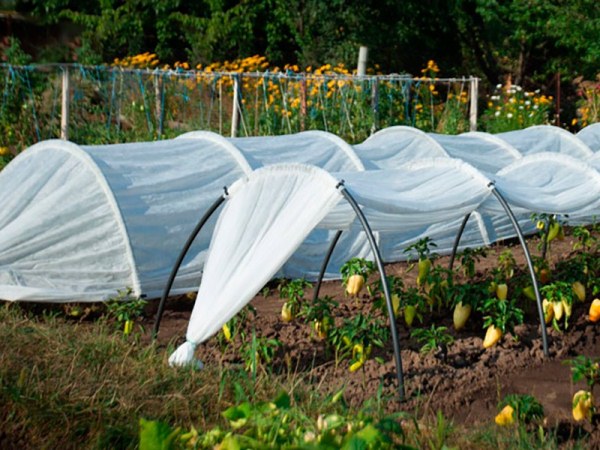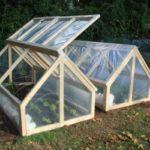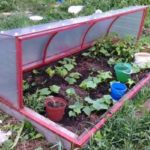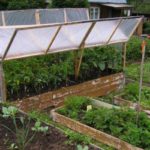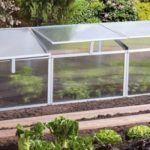The harvest of juicy vegetables will delight every farmer who worked on the land. It has long been used to protect plants using greenhouses and greenhouses, because no one is immune from frost or drought.. The easiest and cheapest way to protect peppers in the garden will be to install a greenhouse, created by yourself, or a purchased design.
Table of contents
The complexity of the construction and the difference from the greenhouse
The simplicity of the design allows you to independently make a greenhouse from scrap materials with a small purchase in the hardware store. The complexity and high cost depends only on the selected materials and the personal wishes of the farmer.
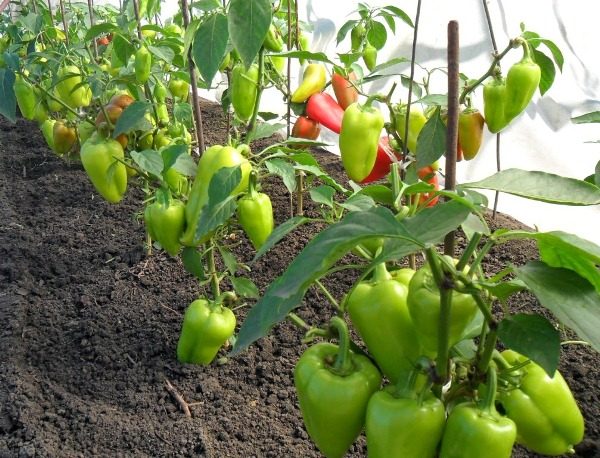
The main difference from the greenhouse is that the design does not provide for a large internal space, additional heating and the presence of a person there. All work with plants is carried out outside, but because it is the cheapest and best option for the garden or garden.
The small size allows plants to more effectively absorb sunlight and retain heat, which is less possible in a huge greenhouse. Growing peppers in a greenhouse allows you to enclose plants from other species, create optimal conditions and protect them from pests and parasites. Temperature control is carried out with an alcohol thermometer.
- Greenhouse butterfly
- Greenhouse bread box
- Greenhouse frame with opening stnkami
- Polycarbonate seedling greenhouse
Advantages and disadvantages of a homemade greenhouse
The main feature is that there is no need for building education - everything is simple and cheap. Using improvised means, you can save a lot of money in the purchase of materials, which cannot be said about ready-made models from the store. The size, shape and design features depend only on the desire of the builder. Disadvantages in homemade greenhouses can appear only for two reasons:
- Poor quality materials.
- Errors in the design.
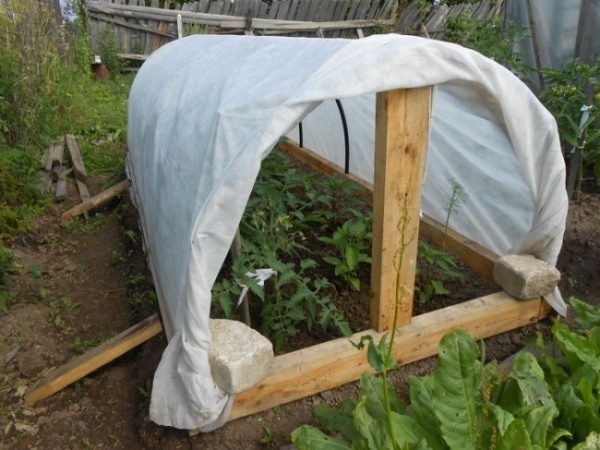
But all this can be warned at the planning stage and the purchase of materials.
Types of greenhouses
The design depends on the selected material and installation features. Here are the commonly used constructions:
- On the foundation.
- With walls.
- Arched tunnel greenhouse.
- Frame.
On the foundation
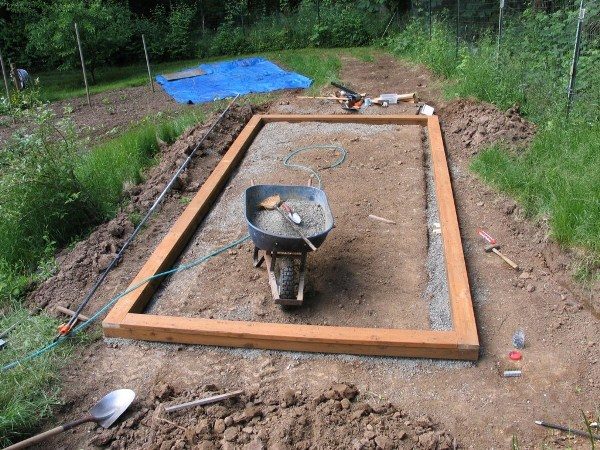
The design is set on the foundation, built above or below ground with a recess on 10 – 15 cm. The construction in the form of walls is constructed with bricks bonded with cement mortar. Also for the base use a bar of various section and length.
With walls
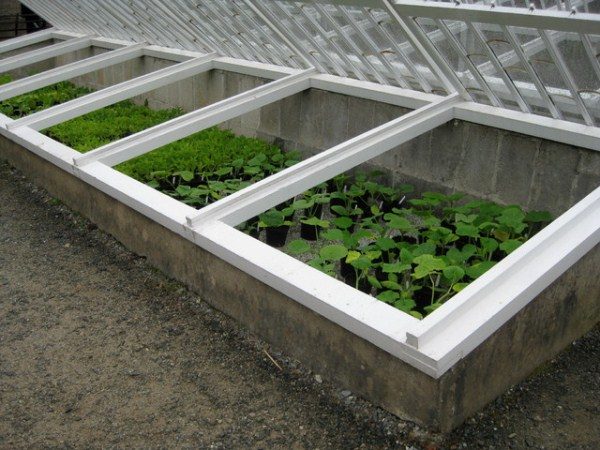
A rectangular box is created from timber, planks and installed on a foundation or on the ground. The top is closed with a frame of rails in the form of a single or dual slope roof.. The frame is hermetically sealed with film, polycarbonate sheets or with inserted glass. In order for the sun to completely illuminate the plants, a single-pitch roof is made at an angle to the south.
Arched tunnel greenhouse
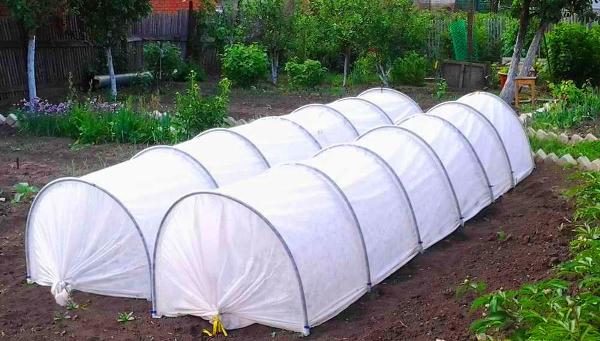
Portable design with lightweight frame. It is possible to dismantle before winter and re-install in spring. Consists of arc-curved wires, wooden rods or polypropylene pipes. Placed in increments of 50 - 60 cm and fixed on a wooden frame. 4 rows of peppers should be planted between the arcs. The top is hermetically closed with a film of different density. To the ground, the structure is attached with pegs, rope loops or heavy objects. Arcs to enhance rigidity can be combined with a wire or frame.
Frame
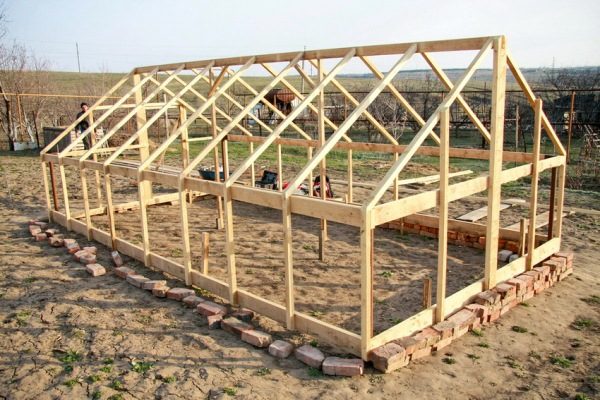
Constructions of lath frames covered with film or polycarbonate sheets. The base for the frame is assembled in the form of a box or house from a bar or boards.
How to make a greenhouse for peppers do it yourself
Independent construction of a greenhouse for peppers does not require much work. Work can be divided into several stages:
- Search for an installation site.
- Purchase of necessary materials.
- Construction planning.
- Stage assembly.
Installation location
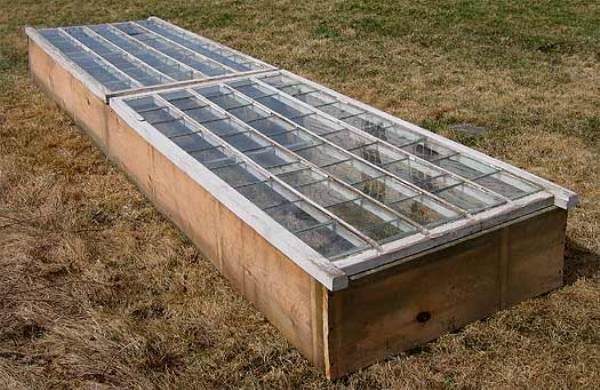
Heating and lighting from the sun play an important role in the growth of peppers, because When choosing an installation site, you need to take into account several generally accepted requirements. The maximum access of sunlight to plants will occur in an open, non-darkened area with an east-west greenhouse orientation and its opening from the south side.
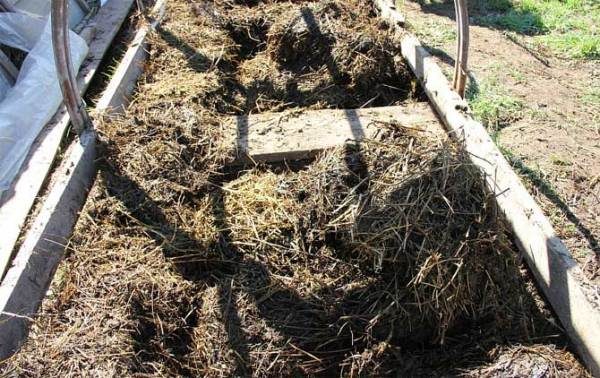
Necessary materials
For a greenhouse with walls it is necessary:
- Board matched to your size.
- Bar for the base 150х150.
- Bar for a framework 50kh50mm.
- Screws with anti-corrosion coating.
- The choice: wooden slats or metal profile, corners, fittings, PVC pipes.
- Polycarbonate sheets or film.
- Simple door hinges.
- Silicone for sealing seams and adhesive tape.
- Antiseptic for wooden parts.
Design
On the foundation of the timber, the boards are fixed in height:
- Side walls - 250 mm and 200 mm at the ends (the shape is similar to an elongated trapezoid).
- Front wall - 200 mm from two ends.
- Back wall - 250 mm from two ends.
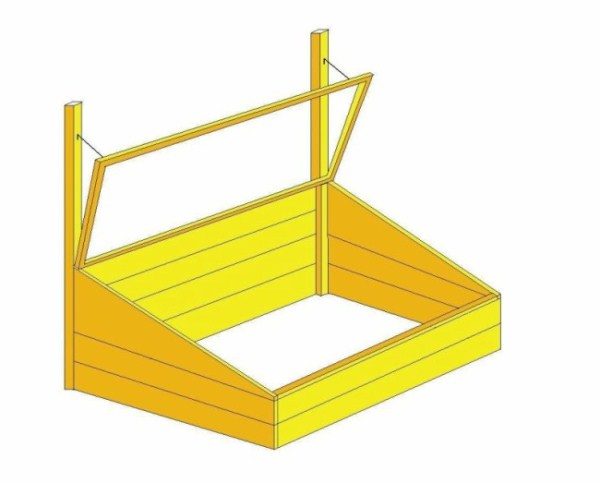
The lid is assembled from metal profiles, wooden slats or old windows. The frame is closed with polycarbonate, glass or overtightened with a film. It is desirable to grease all seams with silicone sealant. The cover and frame are connected with simple door hinges. The main feature of the shelter is its full opening ability for warming up in warm weather and working with plants.
Assembly principle
Before building a greenhouse with walls on the foundation, you need to align and tamp the box installation site. This work is carried out using the construction level and the tensioned rope. Next, establish a foundation of timber or brickwork under the level. By the base, the boards are fixed tightly with nails or self-tapping screws, and the seams are additionally lubricated with a sealant.
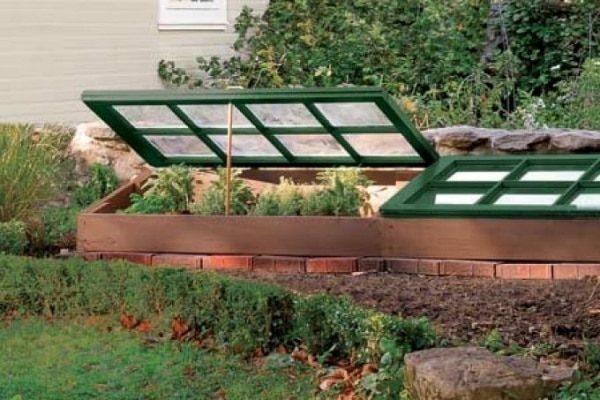
The frame for the cover is collected a little wider than the box to protect from heavy rain.. Places fixing film or polycarbonate grease sealant or stick with adhesive tape.
The frame and the box are hinged from the north so that the lid can be fully opened. All purchased materials can be replaced by what is at home and save a lot of money.
Conclusion
Building a greenhouse with your own hands does not take much time and effort, but The future harvest will be saved in all weather conditions.. The simplicity and low cost of construction allows you to install a greenhouse on any vegetable garden or suburban area.
